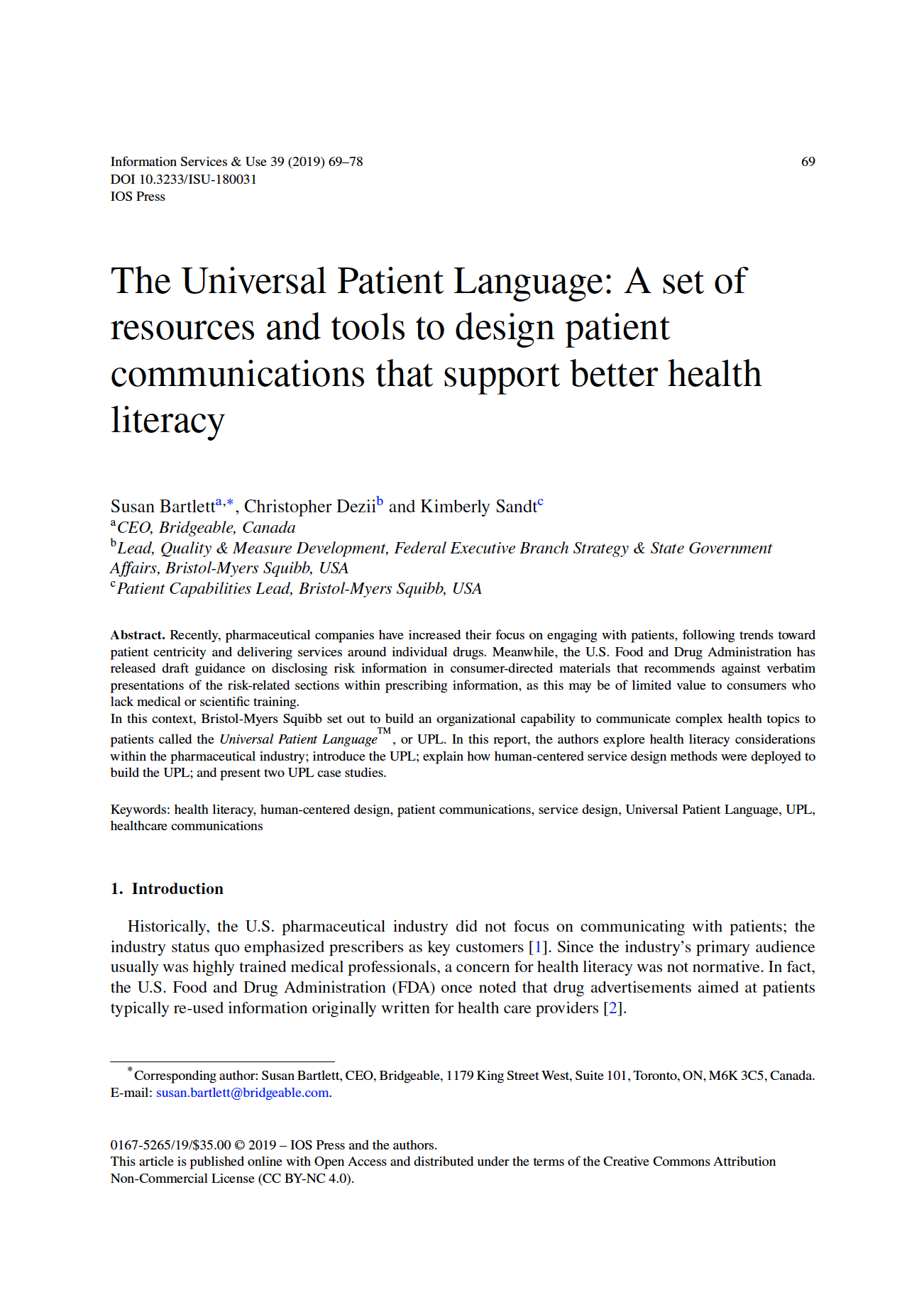The Universal Patient Language: A set of resources and tools to design patient communications that support better health literacy
Recently, pharmaceutical companies have increased their focus on engaging with patients, following trends toward patient centricity and delivering services around individual drugs. Meanwhile, the U.S. Food and Drug Administration has released draft guidance on disclosing risk information in consumer-directed materials that recommends against verbatim presentations of the risk-related sections within prescribing information, as this may be of limited value to consumers who lack medical or scientific training.
In this context, Bristol-Myers Squibb set out to build an organizational capability to communicate complex health topics to patients called the Universal Patient LanguageTM, or UPL. In this report, the authors explore health literacy considerations within the pharmaceutical industry; introduce the UPL; explain how human-centered service design methods were deployed to build the UPL; and present two UPL case studies.
Reprinted from Information Services & Use 39 (2019) 1–2: Bartlett, Susan, Dezii, Christopher, and Sandt, Kimberly, "The Universal Patient Language: A Set of Resources and Tools to Design Patient Communications That Support Better Health Literacy," 1 Jan. 2019: 69–78, with permission from IOS Press.
The publication is available at IOS Press through http://dx.doi.org/10.3233/ISU-180031.


